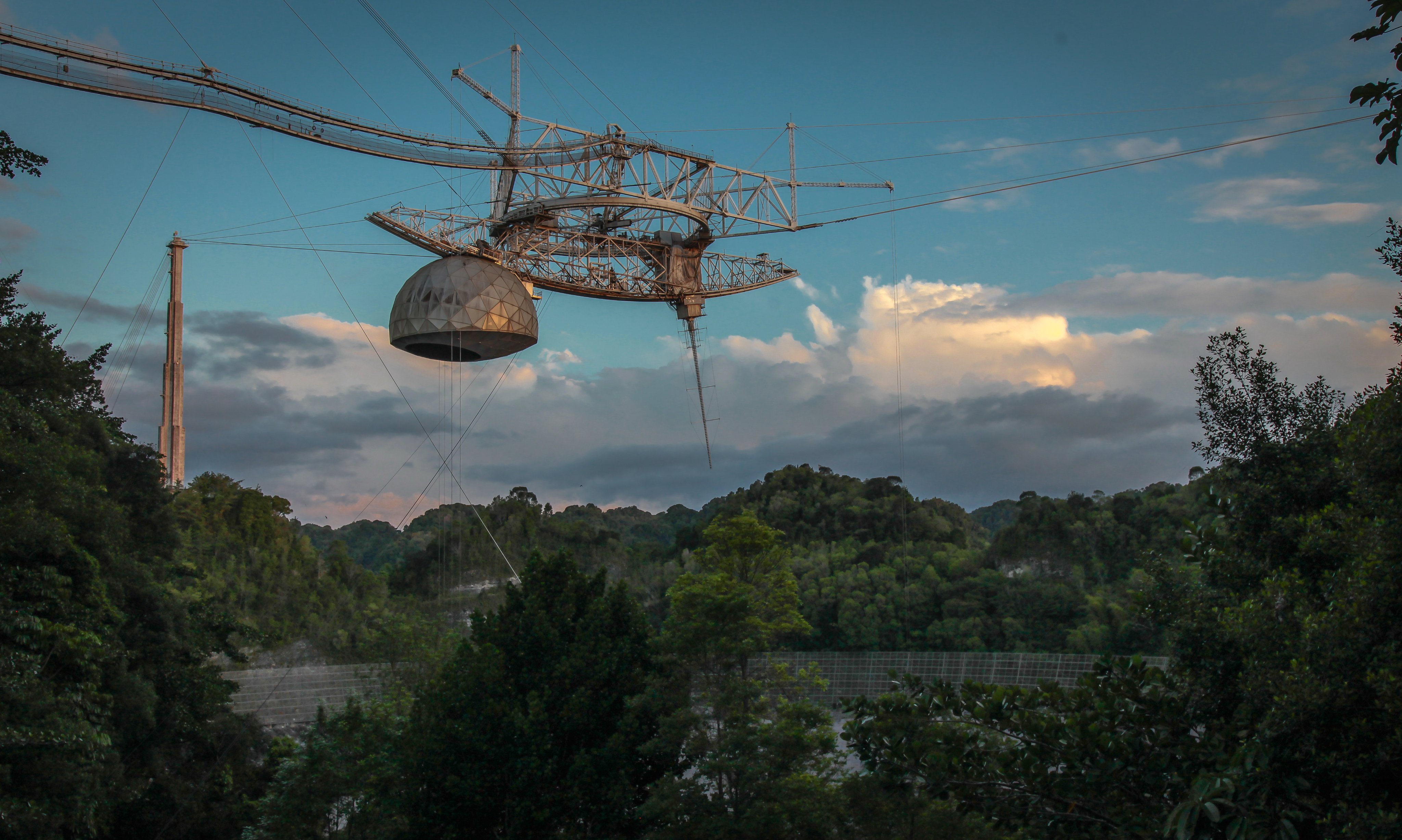Broken Arecibo telescope collapses, ending an era of alien-hunting
Snapped cables left the iconic instrument damaged beyond repair.

A broken cable was the final straw for the already badly damaged Arecibo Observatory's radio telescope in Puerto Rico. The massive structure's 900-ton instrument platform collapsed on Tuesday (Dec. 1) and landed on the 1,000-foot-wide (305 meters) radio dish.
The cable parted at around 8 a.m. local time, Ramon Lugo, director of the Florida Space Institute (FSI) at the University of Central Florida, told Science magazine. The FSI manages the telescope, which is owned by the National Science Foundation (NSF).
While details of the collapse are still forthcoming, the previous failures of two cables in August and November, respectively, placed an extra burden on the remaining support structures. During the past week, the cables that were still in place were rapidly unraveling, losing about one wire per day, Lugo told Science.
Related: From Big Bang to present: Snapshots of our universe through time
No one was injured in the incident, which was confirmed in a tweet by the NSF.
"NSF is working with stakeholders to assess the situation. Our top priority is maintaining safety," the agency tweeted.
Deborah Martorell, a meteorologist in Puerto Rico, posted side-by-side photos on Twitter this morning at 7:18 a.m. local time, showing two very different views of Arecibo. In one image, taken Monday (Nov. 30), the instrument platform is visible over the treetops. But in the second photo, captured Tuesday morning, the platform is gone.
Sign up for the Live Science daily newsletter now
Get the world’s most fascinating discoveries delivered straight to your inbox.
Ayer fue la última vez que visite esta belleza de lugar. Lamentablemente agonizaba. Aquí imágenes de ayer y hoy. pic.twitter.com/jWuAwtUc1sDecember 1, 2020
Built in a natural sinkhole in 1963, Arecibo was the world's biggest single-dish telescope at the time of its construction. Astronomers used its massive dish to detect near-Earth objects such as asteroids, and in 1974 it broadcast the now-famous "Arecibo Message," declaring the technical prowess of humanity to any intelligent extraterrestrials that might be listening.
But after standing for 57 years, Arecibo had its worst year ever in 2020. Earthquakes in January shook the iconic telescope, and then one of its heavy cables snapped on Aug. 10, ripping a gaping 100-foot (30 m) gash in the delicate dish. Just a few months later, on Nov. 6, another cable failed — this one a main support cable for the tower that had already lost a cable in August. Though scientists hoped the telescope could be repaired, the damage was too great, and the NSF announced on Nov. 19 that they would decommission Arecibo.
"NSF is saddened by this development," the agency wrote in a tweet after the platform collapse. "As we move forward, we will be looking for ways to assist the scientific community and maintain our strong relationship with the people of Puerto Rico."
Originally published on Live Science.

Mindy Weisberger is an editor at Scholastic and a former Live Science channel editor and senior writer. She has reported on general science, covering climate change, paleontology, biology and space. Mindy studied film at Columbia University; prior to Live Science she produced, wrote and directed media for the American Museum of Natural History in New York City. Her videos about dinosaurs, astrophysics, biodiversity and evolution appear in museums and science centers worldwide, earning awards such as the CINE Golden Eagle and the Communicator Award of Excellence. Her writing has also appeared in Scientific American, The Washington Post and How It Works Magazine. Her book "Rise of the Zombie Bugs: The Surprising Science of Parasitic Mind Control" will be published in spring 2025 by Johns Hopkins University Press.









